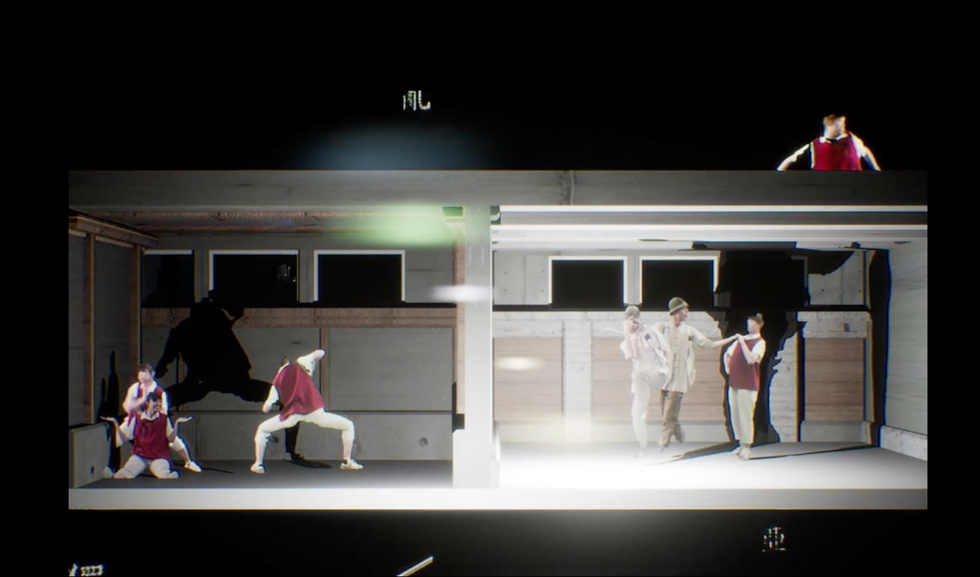Installations
I combine choreography and digital technologies to create immersive and interactive spaces.
 |  |  |  |  |  |
|---|---|---|---|---|---|
 |
An original multilayered choreography of space and immersive experiences. Exploring site-specificity at the Auckland City Council Heritage building, while facilitating discussions around colonial and migrant displacement from a Taiwanese diasporic perspective.






By Yin-Chi Lee
Performers
Adrienne Tucker
Anna Lee
Darryl Chin
Evie Logan Zoe White
About the Work:
Dreaming backwards into the future, Bin-Bāng remembers three displaced generations born on the same island, yet made into different nations. The work carries the weight of migratory memories, woven by fear and the love of all those who came before.
It is an invitation for the audience to dream of someone else's dreams that are haunted by the legacies and ongoing threats of wars.
A three-dimensional single-channel video installation, made with interactive virtual architecture, virtual dancers and photographic images from Taiwan and Singapore.






By Yin-Chi Lee
Collaborators
Darryl Chin
Kyung Ho Min
About the Work:
Unlined explores migrant belonging within the broad terrain of Asian identity. This seven-minute digital work was funded by the Asia New Zealand Foundation in 2021, during the nationwide COVID-19 lockdown, under the theme Experience Asia. The piece examines Asian representation from a diasporic perspective, it is an attempt for the diasporic bodies to reimagine what it means to inhabit an “Asian identity” in performance.


By Yin-Chi Lee
Collaborators
Evie Logan & Zoe White
Darryl Chin
About the Work:
Hiraeth is a three-minute video response to the state of loss and irreversible consequences of diasporic exile. This project investigates the notion of home and what it means to be a stranger looking into spaces and objects that hold memories one cannot remember.
Hiraeth is a Welsh term that refers to a spiritual longing for a home and a nostalgia for ancient places to which one cannot return to. Hiraeth as a term embodies a deep longing for a specific homeland, reflecting a displaced nostalgia rooted in emotional and spiritual attachment. However, the creative project acknowledges the risks and impossibilities of restorative nostalgia in my context. Rather than reconstructing a ‘home’, Hiraeth sets bodies in exile as guests, aware of the dangers of idealising a romanticised or non-existent past, transforming ‘home’ into an alienated space.